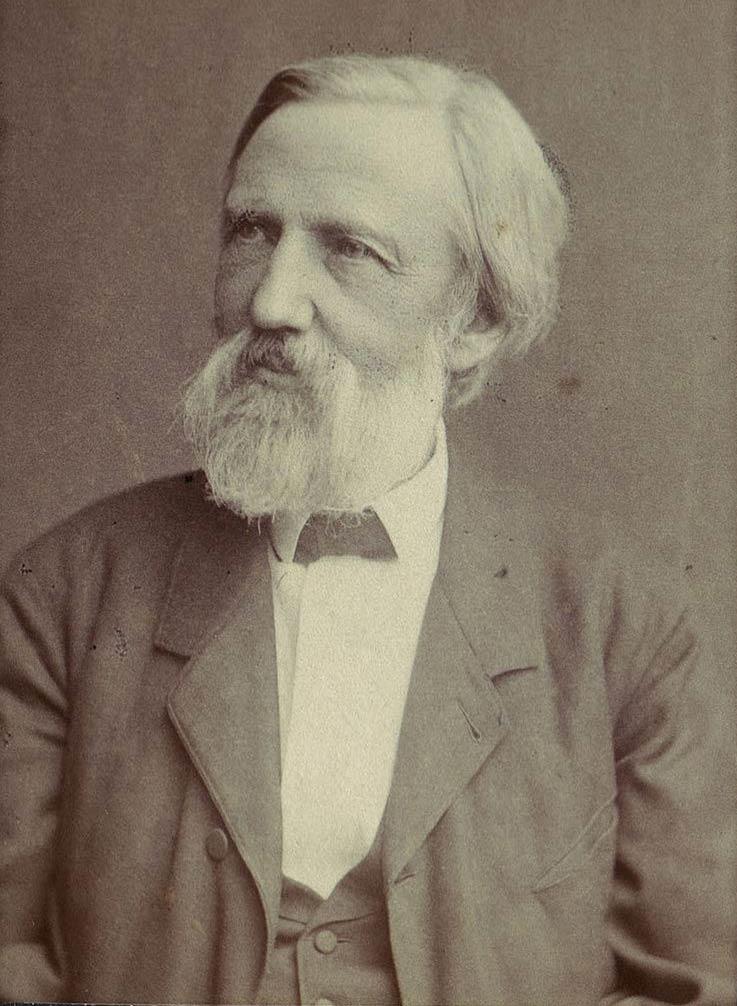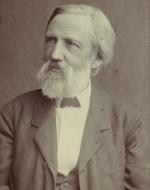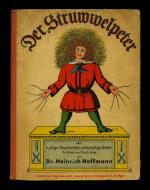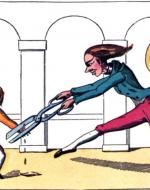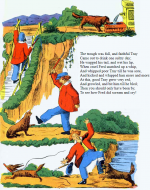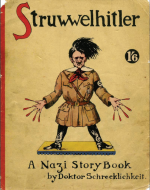Created by Sam Vesey on Thu, 03/21/2024 - 09:23
Description:
Dr. Heinrich Hoffmann is most well known for his first book Der Struwwelpeter (1845), published in England under the same name but translated to Slovenly Peter for release in the United States. Dr. Hoffmann originally wrote the collection of stories as a Christmas present for his son; he felt there was a shortage of suitable books for young children which necessitated his own addition. His friends implored him to publish the book, which he did the following year. It was an immediate success and garnered public and critical approval. Eventually it would become the second most widely translated German language book, second only to Grimm's Fairytales. In the intervening years since its first publication there have been countless republications, parodies, and reimaginings of Der Struwwelpeter. It captured the imaginations of children of the time with its comedy and morals but has since become increasingly anachronistic in our modern day. Der Struwwelpeter's conception of how to raise a child is a fascinating look into the normative mentality of the Victorian era. Undoubtedly it's a testament to the fear oriented style of parenting that was common during the period. However, despite the horrific actions depicted in the book, none of them are ever truly cruel toward the children. They are merely being punished for their actions, guided toward a way of living which aligns with Hoffmann's normative conception of a good child. This shows a kind but firm relationship to children, one that is colored by harshness but not maliciousness. It is important to remember that although Der Struwwelpeter confers an approach to teaching children from a different time, it was still written by a loving father for his son. It is a book whose first copy was unwrapped by an excited little boy on a Christmas morning under the smiling gaze of his father.
Photograph of Dr. Heinrich Hoffman, Wikipedia.
Dr. Heinrich Hoffmann was born June 13th, 1809 in Frankfurt. His mother died when he was young, but his father married her sister soon after. Hoffmann found it difficult to concentrate on his schoolwork when he was young. His father, architect Philipp Jakob Hoffman, sought to "fix" this in him through strict discipline. With the rigor of his father behind him he excelled at his work and went to Heidelberg University to study medicine. Out of university, he established his own practice and worked at a pauper's clinic. Hoffmann wrote Der Stuwwelpeter for his son for Christmas. He had no intention of publishing it, but his friend convinced him to do so. Der Stuwwelpeter was published in 1845 and has since been republished many times. In the years following the book's release, he continued to write new childrens' books but none found the same success as Struwwelpeter. In 1851 he left the pauper's clinic and his private practice to work as a doctor for the Frankfurt Lunatic Asylum. Despite having no training in psychiatric medicine he proved a very quick learner; his humane approach to his patients proved effective in their recovery.
Heinrich Hoffman, "Der Struwwelpeter Cover Page," 1851. The cover of Der Stuwwelpeter has changed a number of times with its various editions. This cover is not the original but has become the most recognizable image of Hoffmann's stories. It is the cover for the majority of publications and the most often used image for the titular Slovenly Peter in his book.
Heinrich Hoffman, "The Story of Little Suck-a-thumb," from his Der Struwwelpeter, 1845.
This is perhaps one of the most famous illustrations from Der Stuwwelpeter. It is from "The Story of Little Suck-a-Thumb," which follows a boy named Conrad as he learns not to suck his thumbs. His mother leaves him for a short while and warns him to not suck his thumbs lest the giant tailor come and cut off his thumbs. Little Conrad doesn't heed her warning and sucks his thumb while she's gone. Just as his mother warns, a giant tailor prances into the scene and snips off both of Conrad's thumbs. The final image of the story shows Conrad, thumbless, being scolded by his Mother for disobeying her.
"Cruel Frederick", From "Der Struwwelpeter" 1845.
This story displays a strongly held portion of Victorian morality. Ultimately it tells little boys to not be cruel, but the medium for this moral lesson is animal cruelty. Victorians put a lot of social weight on the way someone treats animals. That is to say, the idea was that if you mistreated your pet then implies you are the sort to mistreat people in your life. In both England and Germany, societies to prevent cruelty to animals were established long before counterpart societies for the prevention of cruelty to children were. For the British, the Royal Society for the Prevention of Cruelty to Animals was founded in 1824 and the National Society for the Prevention of Cruelty to Children in 1883. Germany followed suit with the Deutscher Tierschutzbund (German Animal Welfare Association) founded in 1881, and Der Kinderschutzbund (The Child Protection Association) in 1953. In the story a young boy, Fredrick, is a cruel child who rips the wings off flies and whips his nanny. He makes the mistake of also whipping a dog who subsequently attacks him. Fredrick's punishment, being bitten by said dog, is a direct response to the abuse he directs toward it. Curiously, the punishment is based on his treatment of an animal, not a person. This shows a direct connection between cruelty to animals and punishment but also an indirect punishment for cruelty to people.
"The Story of the Man that went out Shooting", Heinrich Hoffman 1845.
Not all the stories in Der Struwwelpeter have straightforward, if grisley, morals. "The Story of the Man that went out Shooting" is a simple tale of a hunter who falls asleep and allows a rabbit to steal his gun and the chaos that ensues. While it doesn't have the traditional lessons which the other stories teach, it does impart an important lesson about firearm safety. The hunter doesn't pay close enough attention to his weapon, enough so that he falls asleep and suffers dire consequences for that. The moral here is to be respectful and careful around weapons because if you're not, anyone can take them and hurt you or themselves.
Robert and Philip Spence, Cover of Struwwelhitler," 1945.
Struwwelhitler is an example of one of the many parodies of Der Struwwelpeter which have been created in the years following its publication. Struwwelhitler uses the children's book style to mock Nazi figures by likening them to children and teaching them the evils of Naziism in Hoffmann's style. The book was written by Robert and Philip Spence; however, they published it under the name "Doktor Schrecklichkeit.".Schrecklichkeit is a reference to the term of the same name used to describe the Nazi attitude toward civilians during World War II. "Schrecklichkeit" translates from German to the English "Terror," an apt description for the atrocities committed by German soldiers in that period. The satire in this adaptation shows the breadth of interpretation that Hoffmann's original text allows for.
Copyright:
Associated Place(s)
Part of Group:
Featured in Exhibit:
Artist:
- Heinrich Hoffmann

